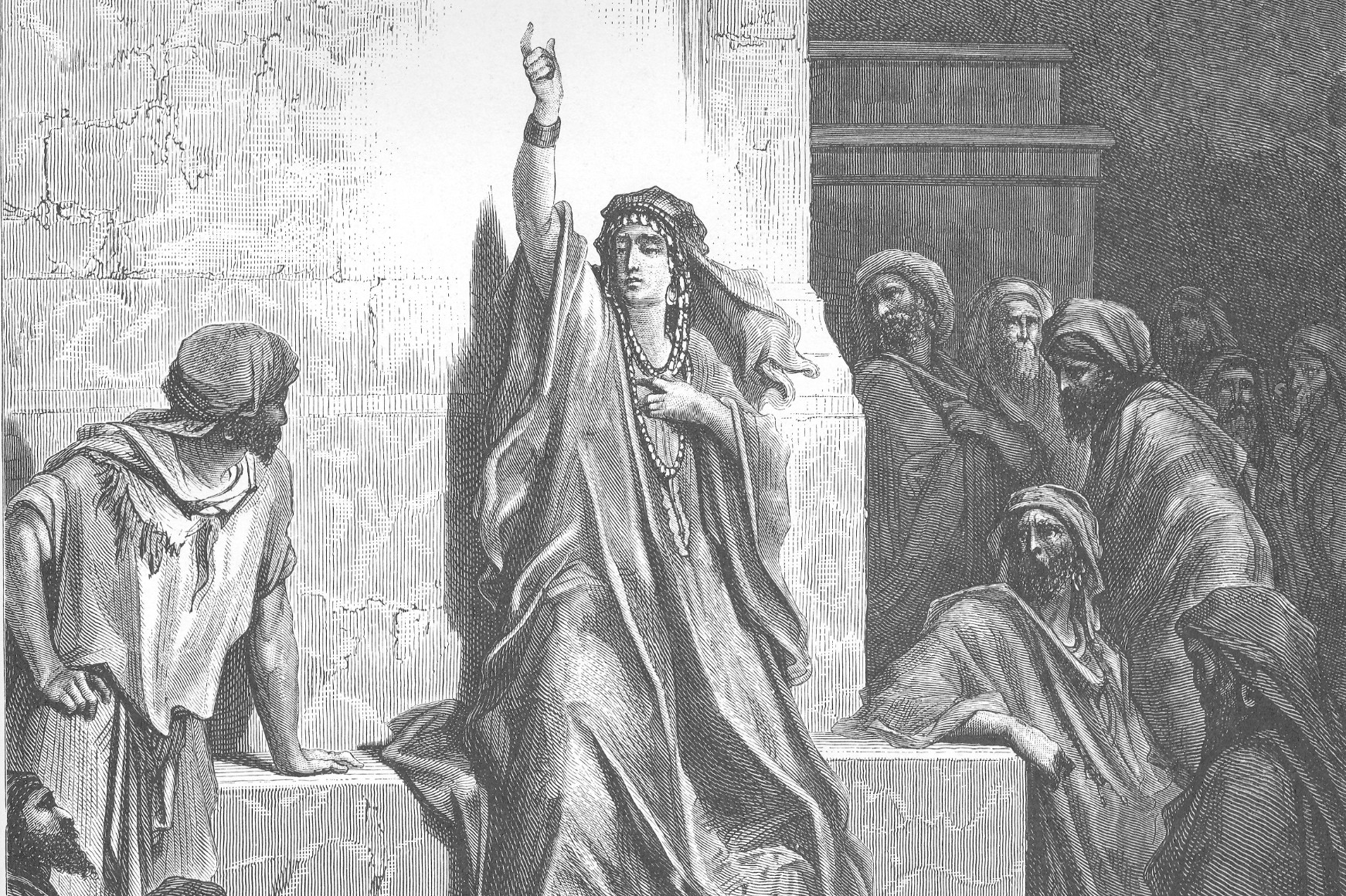Overview
Meaning
- Judges
- Word “Judge” comes from Hebrew word “shaphat” (“to judge”) from “shophet” (“a judge”); adjudicate, rule, or vindicate or provide justice for
- Named after variety of principle rulers (2:16-19).
- 12 judges of Israel: Othniel, Ehud, Shamgar, Deborah (only female), Gideon, Tola, Jair, Jephthah, Ibzan, Elon, Abdon, and Samson.
- Various forms of leadership between Joshua and kingship in 1 Samuel
- Foreign Gods mentioned
- Ashtaroth - Canaanite female goddess of fertility and creation
- Baal - title meaning “Lord” which could refer to a variety of gods - or even a master of a household (depending on context)
Setting
Geography of areas depicted and how region is situated alongside other regions is helpful to understand:
- Small area of Canaan (size of Rhode Island), lies on the way to anywhere in the Middle East
- Egypt
- Mesopotamia
- Syria to East (Royal road)
- Phonician sea trade routes in Mediterranean
- Great geographical divisions (run north/south) - going west-east
- West - coastal plain (main highway) controlled by Egypt at time of exodus
- Low mountains - very fertile
- Great Jordan Rift Valley (Jordan river flows through this)
- Northern extreme is Mt Hermon (highest point)
- Lush vegetation in north
- But no life by dead sea
- Unity was difficult because of diversity of geography
- Small village farmers, nomadic shepherds, city dwellers, merchants
- Out of this diversity arises this variety of Judges
Influence and History
Authorship
- Shows influence from both pre and post Deuteronomistic era
- Pre: local “judges” didn’t worry about centralized temple/religion
- Post: Told in framework that leads up to centralized nationalization
- Influences of post-exile lamentation (18:30)
- Many of the judges are from northern kingdoms (in contrast with later monarchy from Judah)
- Negative portrayal of northern tribes plus (18:30) indicates southern tribe influence
- 1:1-20 southern propaganda
- Mt. Ephraim and shrine of Dan as sinful
- North failed to drive out inhabitants (1:21-36)
- Negative casting of north throughout book
- Anti-Saul, pro-David
- 1:1-20 southern propaganda
- Text builds up to benefits of unified monarchy but warning that king can be villain (Abimelech and bramble in ch 9)
Historical Setting
- Prior to Josian reform, polytheism was more a norm even within Israel and something the Israelites constantly struggled with. It wasn’t a question of if there were other gods/goddesses, it was a question of which one (or ones) to worship.
- Prior the Israelite monarchy (in the book of Kings) Israel was more of a loose collection of diverse tribes amidst strong, conquering, foreign influences
- Different Israelites often worshipped Yahweh alongside a variety of Canaanite gods and goddesses, including El, Asherah and Baal which set a stage of conflict
- As Israelite monarchy strengthened and they experienced exile and return, their theology and worship developed and solidified
Structure
- Three main parts:
- Intro explaining rise of Judges (1-3:6)
- Activities of Judges (3:7-16:31)
- Conclusion showing instability w/o monarchy:
- Micah and conquest of Dan
- Rape in Gibeah and civil war
- Note, text does not present events in chronological order
- Text ends with individuals also in 1 Samuel (Samuel and Eli) - connecting Joshua era to Samuel era
Cyclic pattern
Look for cyclic pattern across the different Judges:
- Cries for salvation
- “Judge” arises and liberates locally
- People relapse after “judge” dies
Types of Judges
Some Judges have more than one persona. Each have their own strengths and weaknesses.
- Militaristic: Othniel, Ehud, (Barak w/ Deborah), Gideon, Jephthah
- Lone warriors: Shamgar and Samson
- Religious:
- Prophetic: Deborah and Samuel
- Nazirite: Samson
- Priestly: Eli and Samuel
- Legal/political judges: Tola, Jair, Ibzan, Elon, and Abdon
Devotionals
Samson & Covenants
- “Nazarite” comes from the Hebrew word “nazir” meaning “consecrated” or “separated”
- Nazarite vow described in Numbers 6:1-21 which included
- Abstain from wine, wine vinegar, grapes, raisins, intoxicating liquors, vinegar made from such substances, and eating or drinking any substance that contains any trace of grapes
- Refrain from cutting the hair on one’s head; allow the locks of the head’s hair to grow
- Not to become ritually impure by contact with corpses or graves, even those of family members
- Length of time of vow could vary from 1 hour to lifetime (usually 30 days)
- Samson’s vow was for life
- The text presents three examples of him breaking covenant vows
- He married outside the covenant house of Israel (Judges 14:1–3) - outside Deuteronomisitc covenant
- He was immoral with a harlot (Judges 16:1) - hearkening back to 10 commandments
- He had his hair cut (Judges 16:4–20) - Nazarite oath
Parallels in Book of Mormon
Similar to pre-centralized Israelite worship, there are parallels with how early Mormonism developed:
- Many early Mormons brought with them theological ideas or traditions from prior or surrounding faiths - including Joseph Smith
- Early Mormons were greatly influenced by their surrounding politics, economics, and religious revivalisms
- Prior to establishment, centralization, and strengthening in Salt Lake, different stakes would sometimes diverge and conflict with each other (falling in and out of apostasy)
- Highly recommend reading Richard Bushman’s “Rough Stone Rolling” to get insight on this - see Book Reviews page
Also, note similar types of “Judges” personas exist in the Book of Mormon (again, some having multiple personas):
- Militaristic: Moroni, Mormon, Helaman
- Lone warriors: Teancum
- Religious:
- Prophetic: Lehi, Nephi, Mosiah, Samuel
- Priestly: Alma, Ammon
- Missionary: Alma, Cezoram, Amulek, Ammon
- Legal/political: Alma, Pahoran, Pacumeni, Cezoram, Lachoneous


